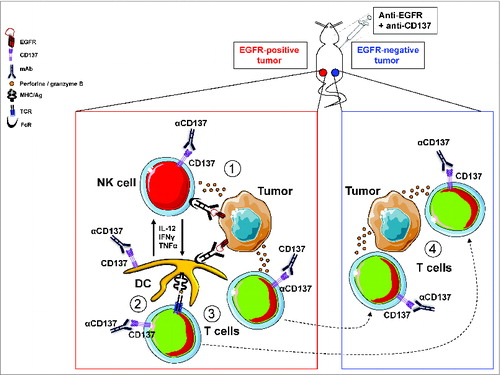Figures & data
Figure 1. Enhancement of the vaccinal effect of an anti-tumor Ab (directed against EGFR) by an anti-CD137 antibody: presumed mechanisms of action. (A) Anti-EGFR mAb binds to EGFR-positive tumor cells and recruit NK cells and DC through their FcR. NK cells mediated ADCC is enhanced by CD137 stimulation and leads to tumor lysis and release of tumor antigens. (B) Tumor-antigens are presented to T cells by DC. This presentation may be facilitated by CD137 stimulation (expressed on DC) and cross-talk with NK. (C) Anti-tumor T cells are generated and expanded following Ag presentation. They can be further stimulated by anti-CD137 mAb. (D) Anti-tumor T cells generated in the microenvironment of EGFR-positive tumor cells can migrate to distant tumor sites, eradicate EGFR-negative tumor cells (through epitope spreading) and retain memory.

